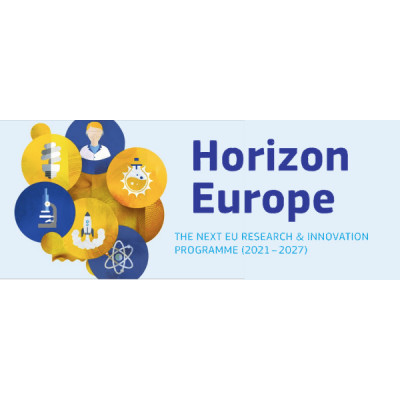Share
Print

May 24, 2024 1:31:59 PM
Call 2023 versions of the templates were erroneously provided for download in this topic, and have been replaced by correct Call 2024 versions: Application Form (Part B) and Business plan Annex. Please make sure to use the current template versions in the proposal submission.
TOPIC ID: HORIZON-JU-CBE-2024-IAFlag-02
Type of grant: Call for proposals
General information
Programme: Horizon Europe Framework Programme (HORIZON)
Call: Circular Bio-based Europe Joint Undertaking (HORIZON-JU-CBE-2024)
Type of action: HORIZON-IA HORIZON Innovation Actions
Type of MGA: HORIZON Action Grant Budget-Based [HORIZON-AG]
Status: Forthcoming
Deadline model: single-stage
Planned Opening Date: 24 April 2024
Deadline dates: 18 September 2024 17:00 (Brussels time)
Topic description
ExpectedOutcome:
Projects are overall expected to address the EU Bioeconomy Strategy[1] and its action plan, the EU Zero pollution ambition for a toxic-free environment under the Chemicals Strategy for Sustainability[2] and the Zero Pollution Action Plan, the EU Industrial strategy[3], the EU Biodiversity strategy 2030[4], as well as the co-implementation of the Transition Pathway[5] for the chemicals industry.
Project results should contribute to the following expected outcomes:
Scope:
Overall, bio-based platform chemicals, according to their chemical structure, can be classified as dedicated, drop-ins or smart drop-ins[7]. There is often medium/high TRL maturity when it comes to the production of bio-based dedicated chemicals. However, cost competitiveness and the sustainability of production can often be hindering factors for further upscaling and uptake of dedicated bio-based platform chemicals.
Proposals under this topic should:
Proposals should implement the multi-actor approach (MAA) and ensure adequate involvement of all key actors in the value chains relevant for this topic and across the sustainable circular bio-based system, including B2B end-users and feedstock providers.
Proposals may consider making existing/new industrial assets (e.g., labs, test rigs, etc.) accessible to researchers, SMEs, etc., for visiting, or training and testing bio-based processes.
Proposals should seek for links and complementarities and avoid overlaps with past, ongoing and upcoming EU funded projects, including those funded under H2020, HEU and the BBI JU and CBE JU[10].
Proposals should also describe their contribution to the Specific CBE JU requirements, presented in section 2.2.3.1 of the CBE JU Annual Work Programme 2024[11].
[1]Updated Bioeconomy Strategy 2018.
[2]The EU’s chemicals strategy for sustainability towards a toxic-free environment.
[3]Brussels, 5.5.2021 COM(2021) 350 final.
[4]Biodiversity strategy for 2030
[5]Transition pathway.
[6]See glossary of the CBE JU Annual Work Programme 2024 (https://www.cbe.europa.eu/reference-documents).
[7]See glossary of the CBE JU Annual Work Programme 2024 (https://www.cbe.europa.eu/reference-documents).
[8]See document defining the framework and criteria: Safe and sustainable by design.
[9]More specifically, provide thresholds that can support the criteria definition and improvements for the assessment SSbD methodologies, including any specificities related with bio-based chemicals. Recommendations should also include identification of data gaps, especially safety, environmental, but also socio-economic factors, as well as priorities for data collection.
[10]Examples from the BBI JU/CBE JU portfolio include, without the list being exclusive: LUCRA (IA), COUNTLESS (IA), PULP2VALUE (IA-DEMO), BIOFOREVER (IA-DEMO), AFTERBIOCHEM (FLAGSHIP), PEFERENCE (FLAGSHIP), WASTE2FUNC (IA-DEMO) and others.
[11]https://www.cbe.europa.eu/reference-documents
1. Admissibility conditions: described in Annex Aand Annex E of the Horizon Europe Work Programme General Annexes
Proposal page limits and layout: described in Part B of the Application Form available in the Submission System
2. Eligible countries: described in Annex Bof the Work Programme General Annexes
A number of non-EU/non-Associated Countries that are not automatically eligible for funding have made specific provisions for making funding available for their participants in Horizon Europe projects. See the information in the Horizon Europe Programme Guide.
3. Other eligibility conditions: described in Annex B of the Work Programme General Annexes
4. Financial and operational capacity and exclusion: described in Annex C of the Work Programme General Annexes
5.Evaluation and award:
Award criteria, scoring and thresholds are described in Annex Dof the Work Programme General Annexes
Submission and evaluation processes are described in Annex F of the Work Programme General Annexes and the Online Manual
Indicative timeline for evaluation and grant agreement: described in Annex F of the Work Programme General Annexes
6. Legal and financial set-up of the grants: described in Annex G of the Work Programme General Annexes
7. Specific conditions:described in section 2.2.3 Calls for proposals in the CBE JU Annual Work Programme 2024
Start submission
The submission system is planned to be opened on the date stated on the topic header.
Get support
Online Manualis your guide on the procedures from proposal submission to managing your grant.
Horizon Europe Programme Guidecontains the detailed guidance to the structure, budget and political priorities of Horizon Europe.
Funding & Tenders Portal FAQ– find the answers to most frequently asked questions on submission of proposals, evaluation and grant management.
Research Enquiry Service– ask questions about any aspect of European research in general and the EU Research Framework Programmes in particular.
National Contact Points (NCPs)– get guidance, practical information and assistance on participation in Horizon Europe. There are also NCPs in many non-EU and non-associated countries (‘third-countries’).
Enterprise Europe Network– contact your EEN national contact for advice to businesses with special focus on SMEs. The support includes guidance on the EU research funding.
IT Helpdesk–contact the Funding & Tenders Portal IT helpdesk for questions such as forgotten passwords, access rights and roles, technical aspects of submission of proposals, etc.
European IPR Helpdeskassists you on intellectual property issues. CEN-CENELEC Research Helpdesk and ETSI Research Helpdesk–the European Standards Organisationsadvise you how to tackle standardisation in your project proposal.
The European Charter for Researchers and the Code of Conduct for their recruitment– consult the general principles and requirements specifying the roles, responsibilities and entitlements of researchers, employers and funders of researchers.
Partner Search Serviceshelp you find a partner organisation for your proposal.
